In the third and final part of her Portuguese adventure, travel writer JEAN WEST visits the ancient port city of Porto
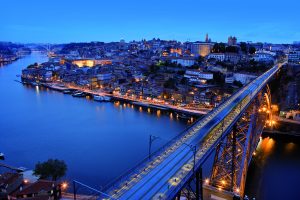
IN PORTO, on our final short lap before home, a little piece of Scottish serendipity sweeps our way.
On the train journey a passenger asserts proudly: “You know JK Rowling was inspired by the bookshop there – you have to go and see it, you’ll soon understand why!”.
In Edinburgh, where we live, a particular ‘JK Rowling woz ‘ere’ café, (where she once took shelter for warmth to write her books as a penniless single mum), likes to get in on the provenance of her creativity.
I peep through the doors of Livraria Lello, deterred from a longer visit by the endless queues that twist and weave along the streets like one of her best-selling tales.
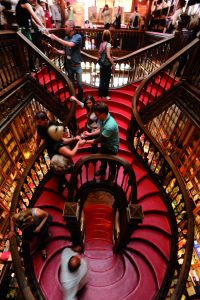
I spy an ambling, ornate Hogwart-style staircase that looks as if it has been carved out of some giant tree species or grown organically from an ancient acorn. However, it turns out to be no such thing.
I soon learn the secret of the elaborate carving during a visit to the Palácio Bolsa. The elegant former stock exchange, whose decorative splendour is almost other-worldly, and is still rented out for weddings and civic events. Our visit took in the impressive judicial chamber.
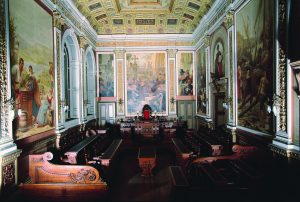
It too is seemingly cast in wood from top to bottom, as if carpenters forwent sleep for decades to whittle and shape it. But we later learn most of it was made in moulds from plaster and then painted authentic wood colour – it was fashionable at the time.
The same goes for much of Livraria Lello. JK Rowling’s first husband was Portuguese and she spent a couple of years in the 90s teaching English in Portugal’s second city on the River Douma.
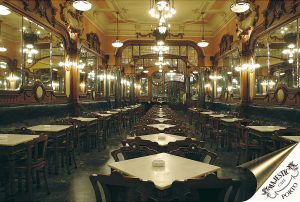
Coffee houses like Café Majestic, a beautiful Art Nouveau inspired cathedral of a place, once popular with bohemians and intellectuals, apparently hosted some of her early ideas.
Another elegant 20th century tram takes us gliding along the rippling Douma traversed by six bridges, including the Maria Pia Bridge, built by Gustav Eiffel, in 1887, just before his famous tower in Paris.
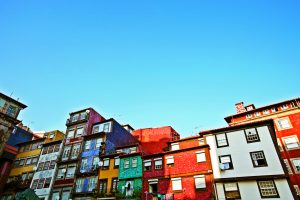
Here we quickly clock the variety of Porto, looking up at the multi-coloured facades of hillside houses, paint-bombed in riotous colour. Some are lived-in, some grand but derelict. Anglers dangle and wind their slippery silver loot from the generous waterways, boat workers have a quick kick-around with a football in the midday sun and the fishing boats slip gently through the waves.
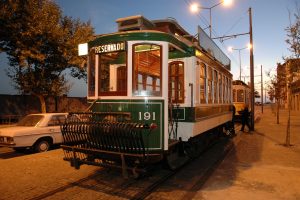
Alighting from the tram we wander through the most epic Serralves gardens to Foz, yet another unexpected jewel of the sea. By the lighthouse the ocean has frothed into whipped cream, bubbling and thundering to the shore like some natural art installation underlying the power of the surf that draws so many to Portuguese beaches.
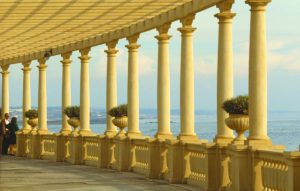
My friend and I take time out for one more of those little pastry and custard wonders filled with sunshine. We watched them being prepared earlier in a local café as we muse of one day commandeering one of those derelict, elegant mansions painted the gentlest shade of green, and making it our own.
As well as Port wine, for which the city is famed, Porto also produces one of the wildest dishes I have ever sampled: the Francesinha. It is a kind of French-style croque filled with every meat you can imagine and layered in pastry and a sauce that is rumoured to be based in beer. Sausage, bacon, pork, and two other meats are involved in the recipe. It’s a bit too much for me but a hearty example of well-loved local fodder.
Caldo Verde, a simple kale soup, is another local delicacy more to my taste, flavoured with the Portuguese chourico and thickened with potato. Tripe too is such a biggie here that locals are known as Tripeiros.
When Henry the Navigator set out on his adventures he was apparently sent off with the best meat in the land, leaving the locals with only the organs and entrails of their cattle. They got creative and now Tripas a Moda do Porto is the namesake dish.
I’ve seen the beauty of this country with my own eyes and now I am reading more that inspires me.
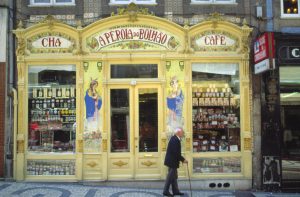
Portugal’s economic rehabilitation continues apace following an international €78 billion bailout in 2011 after a punishing debt crisis. Unemployment is receding and public spending has been checked.
The social conscience of this incredible country blows me away. In recent years its enlightened attitude to the ‘War on Drugs’ has had a profound impact on substance abuse and overdose statistics, and renewable energy provided 104 per cent of Portugal’s electricity in March. Most of it came from hydroelectric and wind power.
I marvel at the discoveries I have made in just two weeks in this tiny place of barely 10 million people, which has so much colour and confidence. Like Vasco da Gamma and Henry the Navigator, I vow to continue my explorations, and one day soon, come back to continue an adventure I can see, has only just begun.

